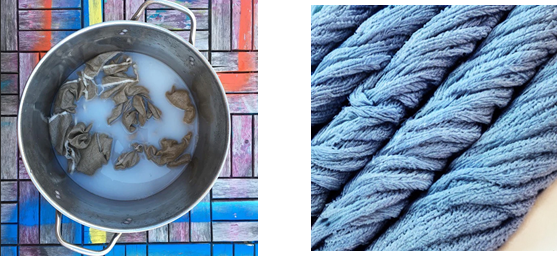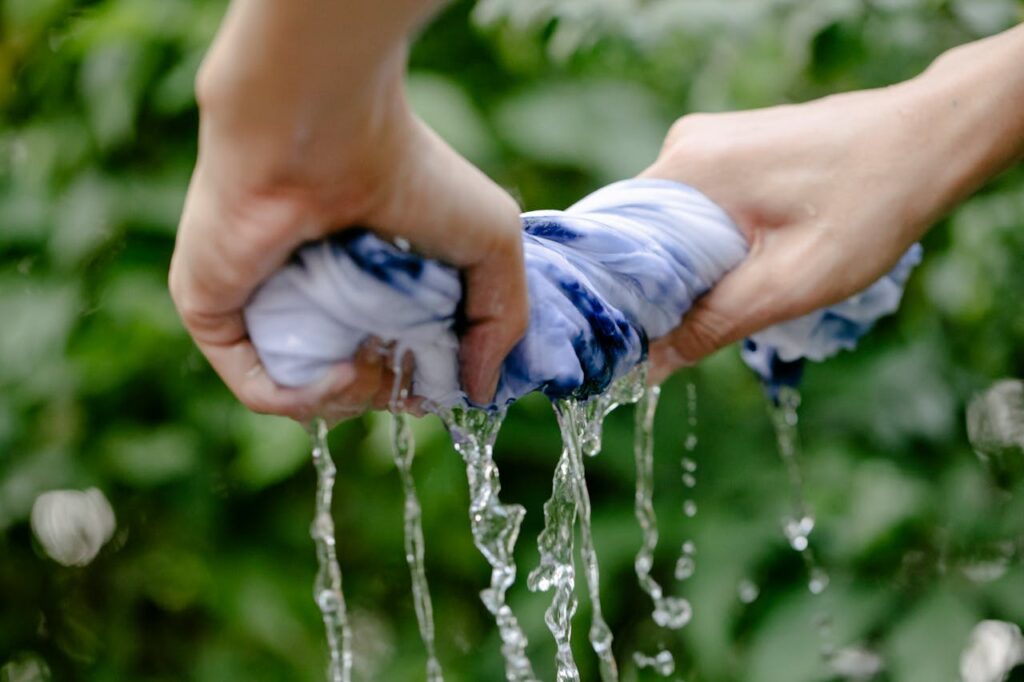Whenever across a stunning piece of clothing we often wonder how those rich colors stay so vibrant. The secret is in a fascinating technique called mordanting, which uses special ingredients called Mordants. Mordants also known as dye fixative are like glue for colors on fabric. They are unique chemicals that assist dyes in adhering to the fabric fibers. Without them, colors might fade away quickly, resulting in dull and plain.
Mordants are like invisible bridges that connect natural dyes to fabric fibers. Similar to how paint needs a base coat to stay on a wall. Its serves as a two-way adhesive, attracting both the dye and fiber molecules, forming a robust bond that produces richer and long-lasting colors.
Types of Mordants:
Metal Salt:
- Alum: Potassium Aluminium sulfate is a type of organic salt. It has various uses like purifying water, tanning leather, food additives, and in the cosmetics industry. When dyeing fabrics it is commonly paired with cream of tartar or potassium bitartrate which helps in enhancing colors and protect wool from damage. It enhances the wool’s intake of alum and raises the pH level of the solution. However, the pH shift can change the final outcome of color. Cream of tartar is included in the mordanting bath in concentrations ranging from 4-10 % of yarn weight. Alum is labeled as non-hazardous by the GHS and also recognized as safe by the FDA.
- Aluminium acetate: It is used for mordanting cellulose fibers. The mordanting process is quite similar to alum in most cases.
- Aluminium Triformate: Versatile mordant which is useable at room temperature for both protein and cellulose fibers.
- Iron(II) Sulfate: It is a green salt green salt that can damage wool and can wool brittle in high concentration and prolonged use. However, it can be a useful option for changing the depth of yarn colors. By adding an iron modifier the colors can become darker and less vibrant and in some cases, the dye color can be completely altered. While using it requires careful handling as it is irritant it the skin and eye and is harmful if swallowed.
- Other mordants like copper sulfate, Tin Chloride, and Potassium Dichromate are present which are hazardous.
Plant-based:
- Tannin Mordants: Tannins are bitter compounds found in plants like in stems, buds, seeds, or leaves. They help tan leather and have antibacterial properties. In high concentrations, tannins can act as natural mordants, eliminating the use of additional mordants in the natural dyeing process. Examples of dye materials with high tannins include tree bark, avocado pits, oak leaves, and galls.
- Soybeans: Soy milk can be used as a natural mordant when dyeing cellulose fibers.

Mordanting Process:
The mordanting process can differ based on the material used, but here is a simplified explanation:
I) Preparation of fabric: Before dyeing, the fabric is cleaned thoroughly to remove any dirt or oils present in it.
II) Application of Mordant: There are 3 different ways that mordant can be used while dyeing.
1) The yarn is first mordanted and then it is dyed
2)Another way to go about it is by adding the mordant directly into the dye bath, but the results may not be as satisfactory as the first one.
3)Or, it is mordant after the fiber is dyed.
III) Rinsing and Finishing: Lastly, to remove the excess dye and mordant the fabric is rinsed thoroughly. Dyeing and finishing may vary depending on the required outcome.
Mordants are like a secret ingredient that enhances the color and longevity of our clothes. Though they are important, they require caution for safety and environmental protection. They also decrease dyeing time and effort and may subtly alter fabric texture. Nonetheless, mastering mordants can transform simple fabrics into beautiful clothes and fashions.

